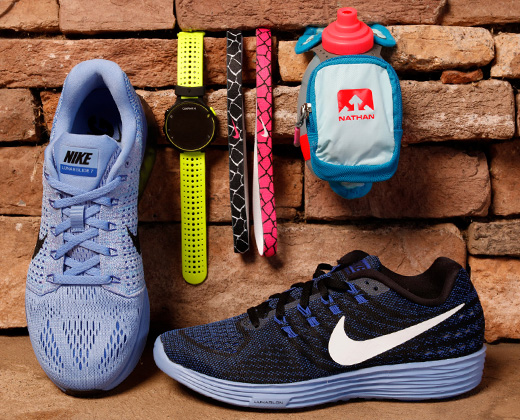How to Choose a Running Hat
Discover the key features to look for when purchasing a running hat so you can be seen and protected in a variety of running conditions.

Running hats are more than just a stylish accessory. Imagine going on a run on a hot day without one. As you’re jogging, you’re forced to squint as the sun glares down into your eyes. Not only that, but sweat is starting to roll down your brow. At this moment, you’re probably wishing you had a running cap.
Running hats are helpful in more ways than just combatting against the warm weather. They serve multiple other purposes, like keeping your head warm in winter or preventing rain from running in your eyes. Their variety of features – from fit, moisture transfer and visibility – can make it difficult to choose which one is best for your running needs.
Fortunately. Pro tips is here to break down all those things to consider and put you on pace for purchasing the hat that’s right for you.
STYLES AND FITS OF RUNNING HATS
The most important part of choosing your perfect running cap is how it fits. If you’re focusing more on discomfort than your run, an ill-fitting hat could inhibit your performance. There are multiple types of fits for you to consider, and you should select the one you find most comfortable. They are:
- Fitted: A fitted hat is the best option to most accurately fit your head dimensions. To measure your head, use a soft tape measure and wrap it around the circumference of your head slightly above your ears and eyebrows (where the hat would rest on your head). Make sure to try on sizes above and below your measured size to ensure it is comfortable.
- Snapback or Strapback: You can alter the diameter of the hat to fit your head with an adjustable strap or band. This strap can be made of leather, hook and loop fasteners, plastic or a poly band.
- Flexfit: Flexfit hats will typically come in a generic S/M or L/XL. The elastic lining allows the hat to stretch to the shape of your head.
- Beanie: This hat is more of a one-size-fits-all style, as it stretches to fit over your head. Make sure the hat isn’t too loose, as it could slide off your head. A workout beanie shouldn’t slouch off your head, either.
- Visor: Unlike the other running hats, a running visor does not have material that covers the top of your head. This openness allows for less weight on your head, but it also exposes the top of your head to the elements. If you wear a high ponytail, this could be a good option for you.
PREPARING FOR THE ELEMENTS
Depending on the time of year, various running conditions could determine your hat needs. For example, running with a thermal beanie when the sun is beating down would not be the best choice. Your running conditions will help you decide what breathability, brim, reflectivity and other features are best suited for you.
BREATHABILITY AND MOISTURE TRANSFER
When you go on a run in the sun and heat, you’re bound to work up a sweat. You don’t want that sweat to get trapped under your hat, so consider a hat with heat-moisture management. A mesh running hat allows perspiration to evaporate quickly and helps keep your head cool. Running visors further provide breathability with their open top.
When running in the rain, you should consider a hat with moisture-wicking properties. This fabric can help quickly remove moisture, allowing it to dry quickly.
THE HAT’S BILL
Shield your eyes from the glare of the sun with the help of a running hat’s visor. Most brims are bendable and can aid in protecting your face from rain, wind and sunlight.
REFLECTIVITY
Another part of the hat design to be mindful of is its visibility or reflectivity. For example, if you enjoy running in the wee hours of the morning or at night, this detail is crucial. With low-light conditions, reflective running hats can help you stand out to other runners and motorists. Fluorescent colors can also help catch people’s eyes similar to reflective vests. Reflective strips will shine when hit by light and can also add a decorative design to your running cap.
OTHER THINGS TO CONSIDER
Temperature can also help dictate the weight of your running hat. During warm weather, you’ll want a lighter cap. While a winter running hat needs to provide just enough thermal protection to avoid overheating during training.
Running hats will sometimes feature a sweatband around the edge. The sweatband can help pull sweat away from your skin and from running down into your eyes.
Also, it’s very important to think about your hair. Someone with no hair should be cautious of exposing the top of their head to UV rays. Conversely, someone who wears their hair back in a ponytail needs a hat that will allow it to be held back securely.
Above all else, make sure your hat is comfortable and provides the needed moisture management for your run. From there, break down what you need in a hat based on the potential elements you will be running in. If you do those things, you’ll be on track to choosing the best running hat for you.







